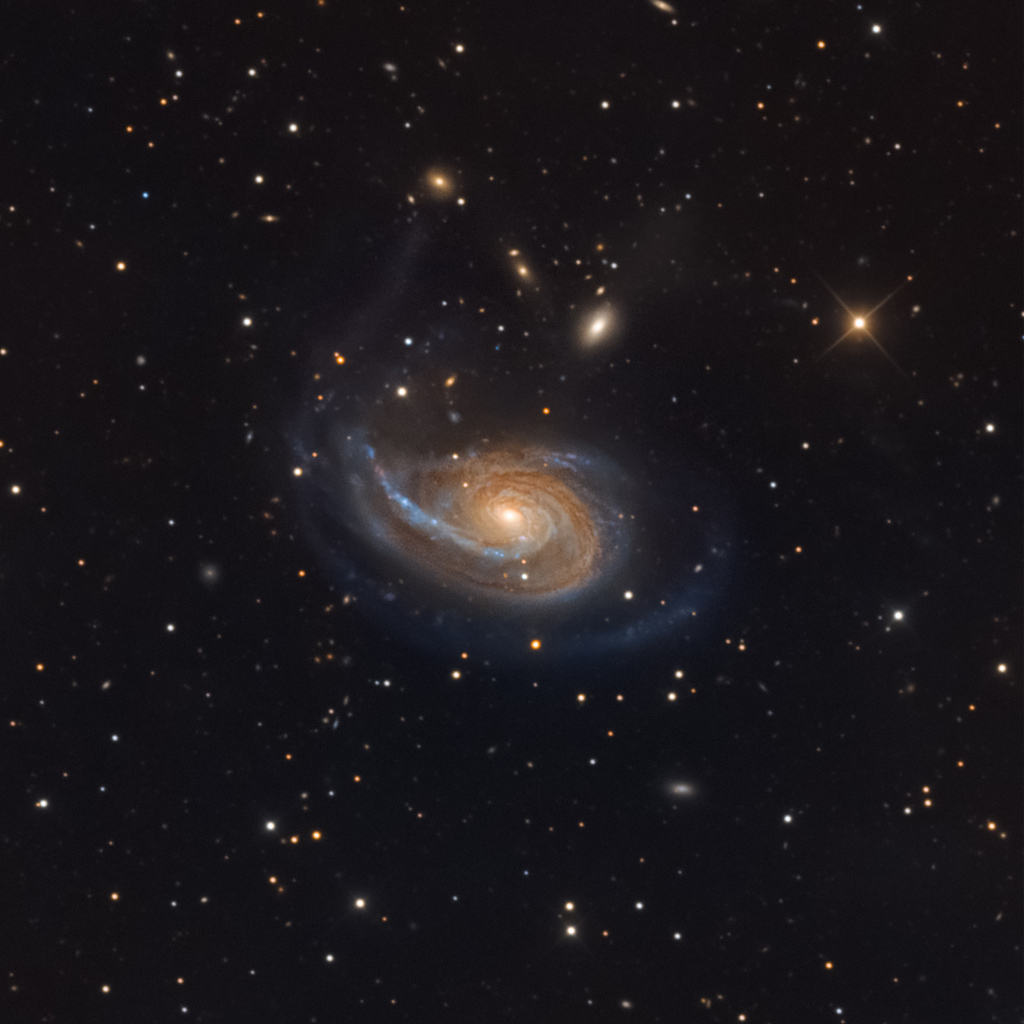Blog
Cora “Lovie” Austin (September 19, 1887 – July 8, 1972) was an American Chicago bandleader, session musician, composer, singer, and arranger during the 1920s classic blues era. She and Lil Hardin Armstrong are often ranked as two of the best female jazz blues piano players of the period.
She was born Cora Taylor in Chattanooga, Tennessee. Lovie grew up with eight brothers and sisters. She took the name Cora Calhoun in her teens from an early marriage; she was married for a short time to a movie house operator in Detroit and then later married a vaudeville performer, Phillip Austin. She studied music theory at Roger Williams University in Nashville, and Knoxville College in Knoxville, Tennessee which was uncommon for African American woman and jazz musicians alike during the time.
In 1923, Lovie Austin decided to make Chicago her home, and she lived and worked there for the rest of her life. She was often seen racing around town in her Stutz Bearcat with leopard skin upholstery, dressed to the teeth. Her early career was in vaudeville, where she played piano and performed in variety acts. Accompanying blues singers was Lovie’s specialty, and can be heard on recordings by Ma Rainey (“Moonshine Blues), Ida Cox (“Wild Women Don’t Have the Blues“), Ethel Waters (“Craving Blues”), and Alberta Hunter (“Sad ‘n’ Lonely Blues”).
more...https://www.youtube.com/watch?v=4ySHLafN9Bw
more...Peculiar spiral galaxy Arp 78 is found within the boundaries of the head strong constellation Aries, some 100 million light-years beyond the stars and nebulae of our Milky Way galaxy.Also known as NGC 772, the island universe is over 100,000 light-years across and sports a single prominent outer spiral arm in this detailed cosmic portrait. Its brightest companion galaxy, compact NGC 770, is toward the upper right of the larger spiral. NGC 770’s fuzzy, elliptical appearance contrasts nicely with a spiky foreground Milky Way star in matching yellowish hues. Tracking along sweeping dust lanes and lined with young blue star clusters, Arp 78’s large spiral arm is likely due to gravitational tidal interactions. Faint streams of material seem to connect Arp 78 with its nearby companion galaxies.

Emily Remler (September 18, 1957 – May 4, 1990) was an American jazz guitarist, active from the late 1970s until her death in 1990.
Born in Englewood Cliffs, New Jersey, Remler began guitar at age ten. She listened to pop and rock guitarists like Jimi Hendrix and Johnny Winter. At the Berklee College of Music in the 1970s, she listened to jazz guitarists Charlie Christian, Wes Montgomery, Herb Ellis, Pat Martino, and Joe Pass.
Remler settled in New Orleans, where she played in blues and jazz clubs, working with bands such as Four Play and Little Queenie and the Percolators before beginning her recording career in 1981. She was praised by jazz guitarist Herb Ellis, who referred to her as “the new superstar of guitar” and introduced her at the Concord Jazz Festival in 1978.
more...Steve Marcus (September 18, 1939 in New York’s Bronx – September 25, 2005 in New Hope, Pennsylvania) was an American jazz saxophonist. His first album as a leader included an arrangement of the Beatles’ song “Tomorrow Never Knows“. He worked with jazz drummer Buddy Rich for the last twelve years of Rich’s life. After Rich died, Marcus led the band and renamed it Buddy’s Buddies.
more...María del Rocío Trinidad Mohedano Jurado (Spanish pronunciation: [roˈθi.o xuˈɾaðo], 18 September 1944 – 1 June 2006), better known as Rocío Jurado, was a Spanish singer and actress. She was born in Chipiona (Cádiz) and nicknamed “La más grande” (“The Greatest”).
In 2000 in New York, she won the prize “La voz del Milenio” for best female voice of the 20th century. Rocío Jurado sold more than 16 million records, making her one of the best-selling Spanish female singers. She received 5 platinum and 30 gold discs.
Rocío Jurado was born in Calvo Soto Street 11, Chipiona (Cádiz) in Andalusia, Spain. Her father, Fernando Mohedano Crespo (died at 36 years old) was a shoemaker and flamenco singer in his spare time; her mother, Rocío Jurado Bernal (died at 52 years old because of pancreatic cancer) was housewife and amateur performer of Spanish traditional music. Rocío Jurado was the eldest of 3 children, Amador (1954) and Gloria (1955) and she had 3 nephews and 5 nieces.
https://www.youtube.com/watch?v=Man1VgCma6A
more...Though he was certainly capable of brilliantly fronting a band, remarkably versatile guitarist/harpist Louis Myers will forever be recognized first and foremost as a top-drawer sideman and founding member of the Aces — the band that backed harmonica wizard Little Walter on his immortal early Checker waxings.
Along with his older brother David — another charter member of the Aces — Louis left Mississippi for Chicago with his family in 1941. Fate saw that the family move next door to blues great Lonnie Johnson, whose complex riffs caught young Louis‘ ear. Another Myers brother, harp-blowing Bob, hooked Louis up with guitarist Othum Brown for house party gigs. Myers also played with guitarist Arthur “Big Boy” Spires before teaming with his brother, David, on guitar and young harpist Junior Wells, to form the first incarnation of the Aces (who were initially known as the Three Deuces). In 1950, drummer Fred Below came on board.
In effect, the Aces and Muddy Waters traded harpists in 1952, Wells leaving to play with Waters while Little Walter, just breaking nationally with his classic “Juke,” moved into the frontman role with the Aces. Myers and the Aces backed Walter on his seminal “Mean Old World,” “Sad Hours,” “Off the Wall,” and “Tell Me Mama” and at New York’s famous Apollo Theater before Louis left in 1954 (he and the Aces moonlighted on Wells‘ indispensable 1953-1954 output for States).
Plenty of sideman work awaited Myers — he played with Otis Rush, Earl Hooker, and many more. But his own recording career was practically non-existent; after a solitary 1956 single for Abco, “Just Whaling”/”Bluesy,” that found Myers blowing harp in Walter-like style, it wasn’t until 1968 that two Myers tracks turned up on Delmark.
more...Siguiriyas (Spanish pronunciation: [seɣiˈɾiʝas]😉 is a form of flamenco music belonging to the cante jondo category. Its deep, expressive style is among the most important in flamenco. The siguiriyas are normally played in the key of A Phrygian with each measure (or compás) consisting of 12 counts with emphasis on the 1st, 3rd, 5th, 8th and 11th beats as shown here:
- [1] 2 [3] 4 [5] 6 7 [8] 9 10 [11] 12
https://www.youtube.com/watch?v=4kpQcV0rzAw
more...X-ray & Radio Images of the Galactic Center
The central region of our galaxy, the Milky Way, contains an exotic collection of objects, including a supermassive black hole weighing about 4 million times the mass of the Sun (called Sagittarius A*), clouds of gas at temperatures of millions of degrees, neutron stars and white dwarf stars tearing material from companion stars and beautiful tendrils of radio emission.

Lalgudi Gopala Iyer Jayaraman (17 September 1930 – 22 April 2013) was an Indian Carnatic violinist, vocalist and composer. He is commonly grouped with M.S. Gopalakrishnan and T.N.Krishnan as part of the violin-trinity of Carnatic Music. He was awarded Padma Bhushan by the Government of India in 2001.
His disciples included his two children Lalgudi G. J. R. Krishnan, Lalgudi Vijayalakshmi, his sister Lalgudi Srimathi Brahmanandam, renowned musician S P Ramh (grandson of Shri. G.N. Dandapani Iyer), renowned Harikatha exponent Vishaka Hari, leading carnatic vocalist Saketharaman, Vittal Ramamurthy, Dr. N. Shashidhar, Film Music Composer Girishh G, Padma Shankar, Kanchan Chandran, Raghuram Hosahalli, Srinivasamurthy, Pakkala Ramdas, Sankari Krishnan, Yamini Ramesh, Mumbai Shilpa, Shreya Devnath, Krithika Natarajan, Salem Sisters, Arushi Ramesh, the leading Vainika Srikanth Chary and the Academy Award-nominated Bombay Jayashri Ramnath.
more...Earl Charles Barrington May (September 17, 1927 – January 4, 2008) was an American jazz bassist. He was “one of the most prodigious and prolific bassists of the postwar era”.
May was born in New York City on September 17, 1927. As a child, he played the drums, and changed to the acoustic bass at the age of 14. He “played left-handed on an instrument strung for a right-handed player”.
Until 1951, May had a job in insurance while playing in clubs at night. During this period, he played with Miles Davis, Lester Young, Gene Ammons, Sonny Stitt, and Mercer Ellington. He was also taught by Charles Mingus in the early 1950s. Through most of the 1950s he played in a trio with Billy Taylor, and also worked in the late 1950s with John Coltrane and Chet Baker.
From 1959 to 1963 he played behind vocalist Gloria Lynne, and in the 1960s he also worked with Dave McKenna, Herman Foster, Shirley Scott, Stanley Turrentine, Herbie Mann, Mose Allison, and Earl Hines. In the early 1970s he began playing electric bass in addition to the double-bass, and played in that decade with Dizzy Gillespie, Johnny Hartman, Joe Newman, Archie Shepp, Frank Foster, Mickey Tucker, and Ruby Braff.
more...Eugene McDuff (September 17, 1926 – January 23, 2001), known professionally as “Brother” Jack McDuff or “Captain” Jack McDuff, was an American jazz organist and organ trio bandleader who was most prominent during the hard bop and soul jazz era of the 1960s, often performing with an organ trio. He is also credited with giving guitarist George Benson his first break.
Born Eugene McDuffy in Champaign, Illinois, McDuff began playing bass, appearing in Joe Farrell’s group. Encouraged by Willis Jackson in whose band he also played bass in the late 1950s, McDuff moved to the organ and began to attract the attention of Prestige while still with Jackson’s group. McDuff soon became a bandleader, leading groups featuring a young George Benson on guitar, Red Holloway on tenor saxophone and Joe Dukeson drums.
more...Hiram “Hank” Williams (September 17, 1923 – January 1, 1953 Butler County, AL) was an American singer-songwriter and musician. Regarded as one of the most significant and influential American singers and songwriters of the 20th century,[7][8] Williams recorded 35 singles (five released posthumously) that reached the Top 10 of the Billboard Country & Western Best Sellers chart, including 11 that ranked number one (three posthumously).
Born in Mount Olive, Butler County, Alabama, Williams relocated to Georgiana with his family, where he met Rufus Payne, an African American bluesmusician, who gave him guitar lessons in exchange for meals or money. Payne had a major influence on Williams’ later musical style, along with Roy Acuff and Ernest Tubb. Williams would later relocate to Montgomery, where he began his music career in 1937, when producers at radio station WSFA hired him to perform and host a 15-minute program. He formed the Drifting Cowboys backup band, which was managed by his mother, and dropped out of school to devote his time to his career.
When several of his band members were conscripted into military service during World War II, Williams had trouble with their replacements, and WSFA terminated his contract because of his alcohol abuse. Williams eventually married Audrey Sheppard, who was his manager for nearly a decade. After recording “Never Again” and “Honky Tonkin'” with Sterling Records, he signed a contract with MGM Records. In 1947, he released “Move It on Over“, which became a hit, and also joined the Louisiana Hayride radio program.
One year later, he released a cover of “Lovesick Blues” recorded at Herzog Studio in Cincinnati, which carried him into the mainstream of music. After an initial rejection, Williams joined the Grand Ole Opry. He was unable to read or notate music to any significant degree. Among the hits he wrote were “Your Cheatin’ Heart“, “Hey, Good Lookin’“, and “I’m So Lonesome I Could Cry“.
Years of back pain, alcoholism and prescription drug abuse severely compromised his health. In 1952 he divorced Sheppard and was dismissed by the Grand Ole Opry because of his unreliability and alcohol abuse. On New Year’s Day 1953, he died suddenly while traveling to a concert in Canton, Ohio, at the age of 29. Despite his brief life, Williams is one of the most celebrated and influential popular musicians of the 20th century, especially in country music.
Many artists covered songs Williams wrote and recorded. He influenced Elvis Presley, Johnny Cash, Chuck Berry, Jerry Lee Lewis, Bob Dylan, George Jones, Charley Pride, and The Rolling Stones, among others. Williams was inducted into the Country Music Hall of Fame (1961), the Songwriters Hall of Fame (1970), and the Rock and Roll Hall of Fame (1987). The Pulitzer Prize jury in 2010 awarded him a posthumous special citation “for his craftsmanship as a songwriter who expressed universal feelings with poignant simplicity and played a pivotal role in transforming country music into a major musical and cultural force in American life.”
more...Louis Hall Nelson (September 17, 1902 – April 5, 1990) was a New Orleans jazz trombonist.
Louis Nelson was born on September 17, 1902 at 1419-21 Touro Street in New Orleans, Louisiana. His father, Dr. George Harry Nelson, was a medical doctor. Dr. Nelson helped organize the 9th Louisiana Volunteers and served in the Spanish–American War. He was commissioned as first lieutenant. During the war he served in Cuba and also stormed San Juan Hill. His mother, Anna Hattie Adams Nelson, was a teacher and pianist from Springfield, Massachusetts. She was a descendant of runaway slaves from the Eastern Shore of Maryland. She was a graduate of the Boston Conservatory of Music. His mother moved to Louisiana to teach and this is where she met her husband. They had three children: Mary Nelson Welch, George Harry Nelson Jr., and Louis Hall Nelson. Both parents and his sister played the piano and his brother played the saxophone. In December 1902, his parents moved to Napoleonville, Louisiana because his father couldn’t get medical patients after the July 1900 Robert Charles Race Riots in New Orleans.
At the age of fifteen, while living in Napoleonville, Louis Nelson started playing the valve trombone and switched to the slide trombone, studying under Professor Claiborne Williams of Donaldsonville, Louisiana. He credited Professor Claiborne Williams with teaching him the proper way to breathe. Williams also taught him that technique and intuition were far more important than technical skill. Nelson is quoted as saying “I heard a fellow, Lawrence Johnson, playing with a band out of Napoleonville. I said, one day I’m going to play trombone like that man. He had a smooth tone, and gave the notes the full value. That’s why I followed in his footsteps.”
Weekdays, Louis Nelson lived with Reverend Isaac H. Hall in New Orleans, Louisiana. Reverend Hall was a family friend who had raised Nelson’s father. While living there, Nelson attended the Lutheran School on Annette Street and New Orleans University (high school) on Saint Charles Avenue in New Orleans, being graduated in 1919.
more...More Posts
- World Music with Mustapha Tettey Addy
- Daily Roots with Turbulence
- The Cosmos with NGC 4565
- Kris Kristofferson Day
- Ray Mantilla Day
- Cal Green Day
- World Music with ESTRELLA MORENTE
- Daily Roots with Sizzla
- The Cosmos with NGC 5426/27
- Eric Reed Day
- Lalo Schifrin
- Skip James Day
- World Music with Alekos K. Vretos
- Daily Roots with Ijahman Levy
- The Cosmos with M16
- Eric Dolphy Day
- Lazy Lester Day
- World Music with Obo Addy
- Daily Roots with Bob Marley
- The Cosmos with Fleming 1
